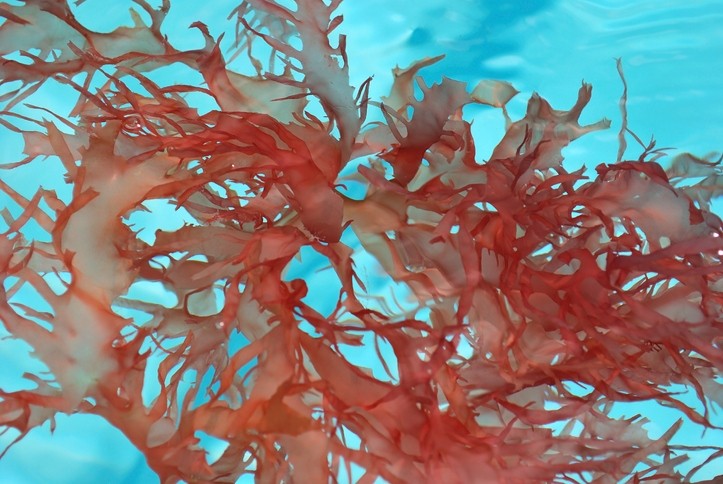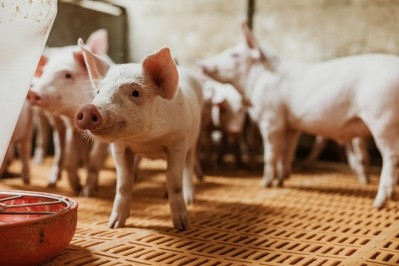UK seaweed blend producer sees commercially focused trial data as key to accelerated growth

The UK headquartered company says it has been building its knowledge over the past 10 years on the specific benefits its products, derived from green, brown, and red seaweeds, can generate across multiple animal species.
We spoke to OHT CEO, Mark Williams, to hear about that trial work and the next phase of the company’s commercial journey.
He joined the company in February 2022. Prior to that, he was CFO of Insect Technology Group, the Black Soldier Fly (BSF) derived protein producer.
First off, he said that having industry veteran, Hadden Graham, come into the business in April 2021 has made a substantial difference to its growth path. Graham, as chief commercial officer of OHT, leads the animal feed division. “The 18 months that he's been here, we have secured over 15 new and potential customers; many are at various stages of trialing our seaweed blends, all with the intention to buy should the data stand up.”
OHT’s blends are applicable across species. “Our four biggest customers are in poultry, then swine, followed by bovine and, finally, aqua. So that's representative of what our customer base is like.”
The prebiotic effect and the bio compounds in the seaweed blends have a consistent effect across species, said the CEO, but he outlined how OHT has been spending a lot on research to demonstrate the specific performance benefits of its products for broilers, piglets, dairy cows, and farmed fish.
“With broilers, for example, our largest customer is based in quite a tropical climate. There was a lot of heat stress associated with its production, but the company saw mortality rates reduced from over 8% to under 4% when using our product. It also saw liveweights increased by 4%, and feed conversion ratios improved by approximately 8%.
“All of that led to a big economic benefit for that company as well as sustainability gains as there is a lot less wastage. It will buy more than half a million euros worth of product from us this year.”
The recommended rate in feed for the OHT blends in swine and poultry is around 0.25%.
OceanFeed Swine (OFS) is used widely in swine production, he continued.
“For piglets, our product has been used by our customers as a partial replacement for antibiotics and zinc oxide. Our largest customer in swine is in North America, who used OFS in its piglet diets when it chose to go antibiotic-free.”
A recent study indicated OHT’s seaweed prebiotic blend is effective in low-zinc piglet diets. “We're getting good traction with customers following that data release on zinc oxide (ZnO) removal.”
Methane emissions reduction
Methane emissions reduction in cattle is on the company’s radar as well.
“We have trials ongoing at two UK universities on OceanFeed Bovine (OFB). The in vitro work is done, and we are now going to be carrying out in vivo trials to determine to what extent the product can lower methane emissions in cattle.
“We have already seen that, in dairy, OFB has a material production benefit, trials have recorded increases in milk production of up to 5%."
The trial results should be published early next year, he added. “We hope we can get some initial sales on the back of that data in 2023.”
Aquaculture targets
The company is also looking at undertaking several challenge trials next year.
“We have a study that is starting in Thailand, in conjunction with a university, and involving one of our customers in the region, around the use of OceanFeed Aqua (OFA) in shrimp in a challenged environment, with Vibrio present.
“We have seen much lower mortality in commercial shrimp production when our product is incorporated, and we are now doing the academic research to demonstrate that efficacy.”
Supply chain
OHT has one production facility in Vietnam, near Ho Chi Minh City. It has grown in its capacity over the past few years, said Williams.
“Seaweed is sourced globally. I’d say about three-quarters comes from Southeast Asia. But the brown seaweeds come from the North Atlantic. It is all shipped to our site in Vietnam.
“The seaweed supply chain is key. Sourcing seaweed is not straightforward as it is wild, and most of it is sourced from areas with poor infrastructure and low economic development. We have helped establish a supply chain, in some countries directly with local fishermen and, in other markets, with brokers. We are now looking at new areas where seaweed blooms are occurring, but which are not commercially exploited. That gives us quite good visibility on increasing volumes across multiple species.”
OHT’s cost of processing is not that high, continued the CEO. “Most of the seaweed we buy is dried. By the time it gets to our factory our emphasis is on quality control, on getting a uniform material and then on blending and production.”
The company still has R&D facilities in Galway, in the west of Ireland, where its head office was located originally. Williams said the decision to switch the HQ to the UK was based on the idea that, for any future funding, having a UK entity would be more suitable.








